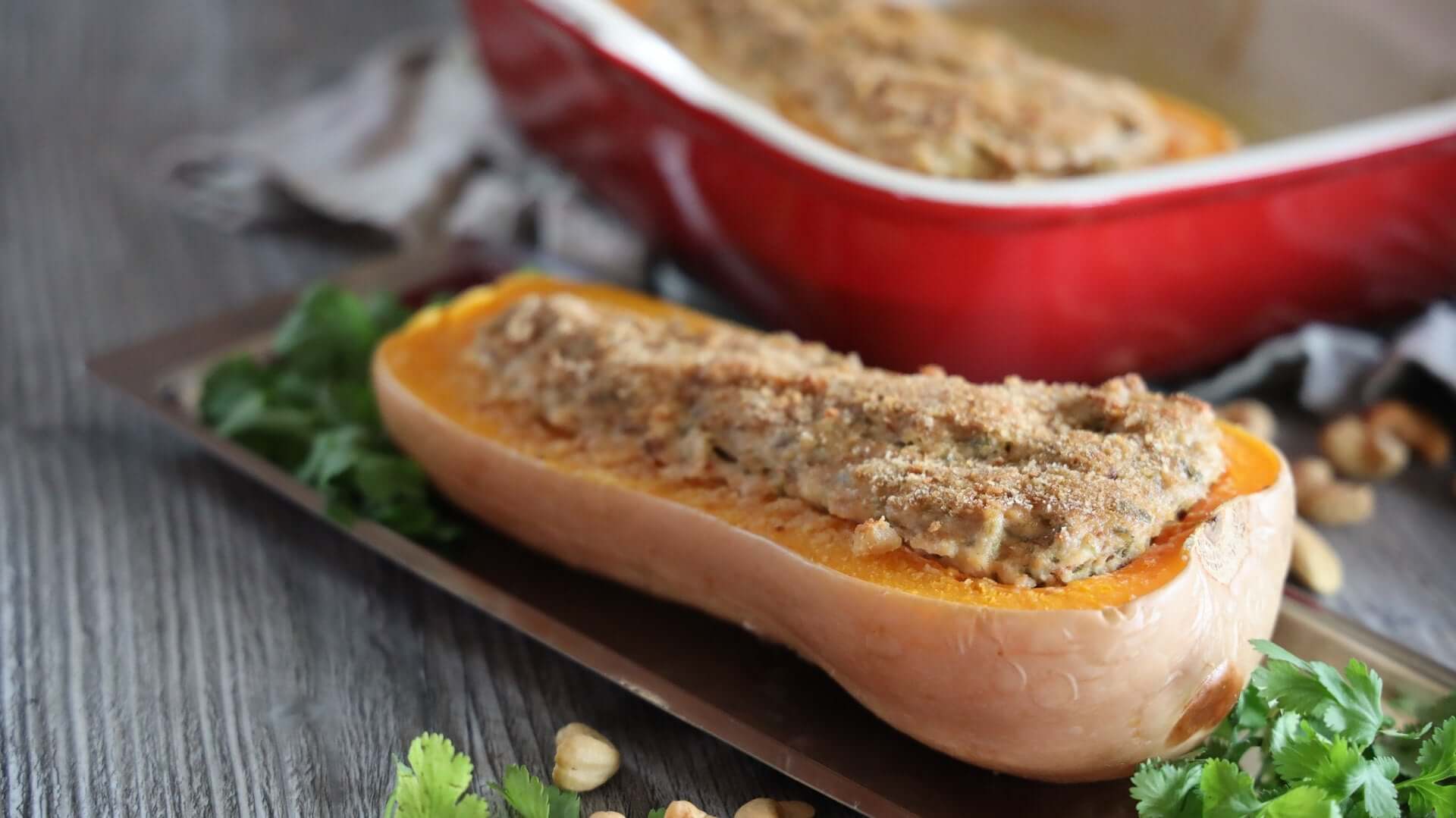
Inhaltsverzeichnis
Replacing cheese – What you should know & which basic ingredients you need to make vegan cheese alternatives at home
Natural meat alternatives?Check. Make your own oat milk at home?Check. Replace egg flavor with Kala NamakCheck. But what about cheese? Are there alternative foods that come close to the taste and consistency of cheese? We'll get to the bottom of this question today.
Why vegan cheese makes sense
"I simply couldn't live without cheese!" – For many people, this is precisely one of the reasons why they can't imagine going vegan. And I admit that for a long time, I struggled to give up cheese. Cheese is diverse in terms of consistency, use, and intensity of flavor – and simply delicious.
However, when you consider how cheese is made and the suffering that accompanies its production, the whole thing looks different. After all, cheese is ultimately a dairy product made from cow's, sheep's, or goat's milk. And this very point—that cheese production requires the extraction of milk—is precisely what's important. Many people seem to forget this. This makes eating cheese just as unethical as consuming milk.
To put it briefly: The dairy cows are first artificially inseminated. After birth and the subsequent separation from their young calf, the cows serve only as living milk machines. The constant milking often causes severe inflammation and illness. As if that weren't bad enough, the young calves—if they don't suffer the same fate as their mothers—are slaughtered and processed into veal.
Besides this ethical reason to avoid cheese and other dairy products, there are, of course, many other reasons for a plant-based diet. But that's another story... :-)
What is the challenge in producing cheese substitutes
Cheese consists largely of milk protein and animal fat. Variations in various subprocesses, such as ripening or the ratio of fat to water, result in a wide variety of textures and flavors: from cream cheese and semi-hard cheese to brine cheeses like feta, mozzarella, and hard cheese. It is precisely this diversity that makes cheese so popular.
Unfortunately, this also presents the greatest challenge for vegan substitutes. This diversity places high demands on cheese alternatives. While there are now a wide variety of vegan substitutes, it remains difficult to replicate, for example, a "whole" Gouda or Camembert.
The plant-based alternatives to cheese are mostly produced on the basis of nuts, pulses and seeds, z.B. from almonds, cashews, or soy. These provide fat, some protein, and can be processed in a variety of ways. What's missing, however, is the typical savory flavor of cheese. Spicy spices like paprika, onion powder, and mustard are used for this.
Fortunately, the range of vegan cheese alternatives is increasing significantly – naturally also due to the ever-increasing demand. Plant-based alternatives to cream cheese, Parmesan, pizza cheese, feta, and, of course, sliced cheese are now available. These can be found in well-stocked supermarkets, organic food stores, and even some health food stores.
Incidentally, vegan cheese is often healthier than conventional cheese because the plant-based alternative is less acidic and has better fatty acid patterns.Of course, this all varies depending on the product, ingredients, composition and processing of the ingredients.

Photo by Megumi Nachev on Unsplash
How to make vegan cheese at home – with these 3 basic ingredients
Vegan cheese alternatives don't always have to come from the supermarket. Plant-based cheese can also be made at home. It's often easier than you'd think. You can find a variety of recipes online, and also on our blog. Here you can find a recipe for a vegan cheese dip!
(To make sure you don’t miss anything in the future, Feel free to subscribe to our blog newsletter – just read to the end this linked page scroll and enter your name and email address ☺).
The basic ingredients for plant-based cheese preparations are basically always the same: cashews, yeast flakes, and almond butter.
Cashew nuts
Cheese often has a nutty flavor. So it's not a stretch to imitate cheese based on nuts. Cashews are particularly well-suited for this. Cashews are not only appealing in terms of taste, but also in their consistency and processing possibilities. Unlike other nuts, cashews have a rather mild flavor. If desired, this can easily be enhanced with a few spices. Another advantage of cashews is their naturally creamy white color. This is particularly suitable for imitating light cheeses.
Anyone who wants to make cheese substitute with cashews should have a good blender. This determines how creamy the final product will be. It's also important that the cashews have been soaked in water beforehand, as this makes them ideal for processing.
There are several ways to soak cashews. The safest way is to soak them in warm water overnight. If you're short on time, you can soak them a few hours in advance or even boil them in water for about 10 minutes.
Yeast flakes
One of the foods I don’t want to miss anytime soon 😄For me, nothing comes quite like the taste of "real" cheese like the aroma of nutritional yeast. This savory, hearty umami flavor comes from the glutamic acid contained in nutritional yeast.
Unlike dry and fresh yeast, the yeast cells contained in nutritional yeast are inactive. Therefore, adding nutritional yeast to a dish doesn't cause the dough to rise. Instead, they are used as a binding agent and for their flavor.
While it's true that nutritional yeast contains many vitamins and trace elements, which is a good thing, we typically consume yeast flakes in such small amounts that the "effect" of the ingredients in nutritional yeast flakes isn't as extraordinary as is sometimes claimed.
Yeast flakes are usually sold in 200g cans or bags. Savory and sweet versions are now available. The savory version contains pure yeast flakes (sometimes enriched with vitamins) and is suitable for savory dishes. Sweeter ingredients such as whey powder, bee pollen, or honey are added to the sweet version, which can then be added to muesli, for example.If you want to use yeast flakes to make vegan cheese substitute, you should make sure to buy the spicy version.
The flakes can be eaten pure (z.B. as a Parmesan substitute) or added to the finished dish to create a cheesy flavor. Generally, nutritional yeast should not be cooked, as some of the B vitamins are sensitive to heat.
almond butter
This is another staple in my pantry that I can't imagine being without. Almond butter is versatile; I use it primarily in porridge and for baking. Unfortunately, almond butter is quite expensive when bought in a store. However, it's also possible to make it at home. Personally, I have to admit that I haven't tried it yet (but it's definitely on my list!).
But back to the actual topic:
Almond butter can also be used as a cheese substitute. It is especially popular for gratinating, z.B. on casseroles or pizza. If you're in a hurry, you can pour it over the dish just before baking.
Anyone who a little If you have more time, boil water with a little flour until a thick mixture forms. Then stir in one to two tablespoons each of almond butter and nutritional yeast. Season with salt and pepper – voilà, vegan cheese melt!
The great thing about all these ingredients is that they're easy to store. This means you don't have to run to the supermarket every time you want to make a cheese substitute. You usually already have the other ingredients for making plant-based cheese, like plant-based milk, flour, or spices, at home. So you can get started right away! :)
If you want to know more about nutrition, mindfulness, family & pregnancy or sustainability, take a look here over.

Photo by Ponyo Sakana from Pexels



























Leave a comment
This site is protected by hCaptcha and the hCaptcha Privacy Policy and Terms of Service apply.